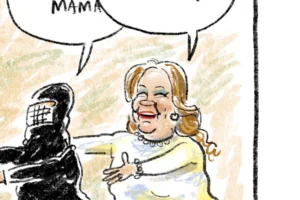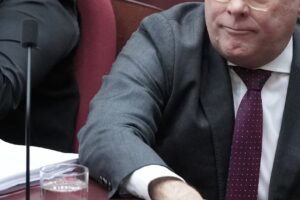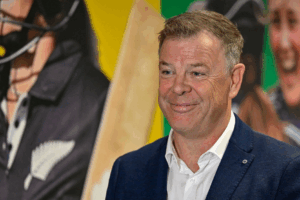
At a conference in August, I awoke to the perfect example of well-executed brand marketing: Gap’s “Better In Denim” ad that had launched overnight. I played all 90 seconds of the ad to a captivated audience before we launched into a discussion about the new marketing strategy and creative concepts that are driving Gap’s revival.
Related Article Block Placeholder
Article ID: 320150
I hadn’t felt this excited about a campaign in a long time.
In recent years, Gap, once a behemoth of American casualwear, slid into the encyclopedia of cautionary tales about heritage brands that lost their way. Store closures, slumping sales, identity confusion: for Gap, the ending of its fairytale was not looking to be a happy one.
But now, under new leadership that has focused on clear strategic positioning and an appreciation of the role brand plays in commercial success, Gap is mounting a comeback. Its revival offers lessons not only for fashion houses, but for any brand wrestling with relevance in an age of rapid change.
Throughout the 80s and 90s, Gap’s denim, tees, and hoodies with the iconic logo embodied a certain American optimism.
Smarter business news. Straight to your inbox.
For startup founders, small businesses and leaders. Build sharper instincts and better strategy by learning from Australia’s smartest business minds. Sign up for free.
By continuing, you agree to our Terms & Conditions and Privacy Policy.
But over time, Gap wavered between aspirations of mass appeal and premium positioning, while competitors like Zara, H&M or niche jeans players ate into both ends of its market. Between 2001 and 2021, the retailer closed nearly 2,000 stores and lost US$3.5 billion in annual revenue.
By the time Richard Dickson was appointed CEO in 2023, upon the heels of his success turning around Barbie, the challenge was huge: regain relevance without betraying the brand’s DNA.
What’s fascinating about Gap’s revival is how it leans not on copying fast fashion, but on reclaiming cultural relevance and going back to its roots. The “new” marketing plays are anchored in four interlocking pillars that are what made Gap relevant all those years ago.
Related Article Block Placeholder
Article ID: 270554
1. Purposeful, culturally attuned campaigns
Gone are generic ads.
Instead, Gap’s content is built around dance, nostalgia and emotional narratives — just like it used to.
The Better in Denin campaign featuring TikTok collective KATSEYE, generated some 8 billion impressions and briefly made Gap the top-searched brand on TikTok, speaking to both gen Z, who immediately recognise the talent in the ad, and millennials/gen Y who grew up in an era of music videos and commercials like Britney Spears for Pepsi.
It was the best of everything advertising used to be: joyful, memorable and engaging.
Get Loose, with Troye Sivan, returned Gap to its 90s DNA while incorporating TikTok native formats. Feels Like Gap, starring Parker Posey, is loaded with irony, reframing staple items as playful and contemporary. These campaigns aren’t just ads; they’re cultural interventions that are addictive to watch. Just read the comment sections.
2. A layered talent strategy focussed on amplification
Gap is smarter about creator partnerships now: they hire big names, sure, but also they select voices that will resonate authentically across a broad target audience.
Its work with Troye Sivan, Tyla, and niche brands like Dôen has driven increases in influencer mentions.
It’s like a babushka doll of voices, each layer revealing yet another mention or share, further amplifying the brand and garnering the hard-to-achieve attention of youth audiences that so many brands desire.
Related Article Block Placeholder
Article ID: 322297
3. Seamless commerce via data-driven personalisation
Gap is building a customer funnel from watch to want-to-wear with precision. The campaigns all lead with shoppable lookbooks and integrated e-commerce links.
Behind the scenes, personalisation, which we know is critical, is baked into email timing, subject lines, product suggestions, and geo-local homepages. The app ties behaviour, rewards, and location data together into a fluid omnichannel experience. Meanwhile, a “ship-from-store” model ensures stock is local and delivery is quick.
4. Discipline in metric alignment and orchestration
Gap has re-aligned creative, commerce, and quarterly performance metrics so marketing is central to the commercial strategy and success of the brand. It ties campaign impact to comp growth, margin, and operating cadence.
Recent results suggest early momentum: in Q2, the brand reports +4% comparable sales growth and the brand’s seventh consecutive quarter of positive comps. The words straight from Dickson’s mouth: “our brand reinvention playbook is working….as we continue to position the brand in the premium lifestyle space”.
What do heritage brands and marketers learn from this?
That your history is a springboard, not a crutch. When trying to reinvent the wheel and become relevant once more, the archives of your brand are a rich and inspiring place to start. Give them to someone with fresh eyes, let the legacy form the scaffold of the new plan, insist on being culturally relevant, and ensure that your creative and sales teams are in lockstep.
Decide who you are — in Gap’s case, a premium brand — and own it.





